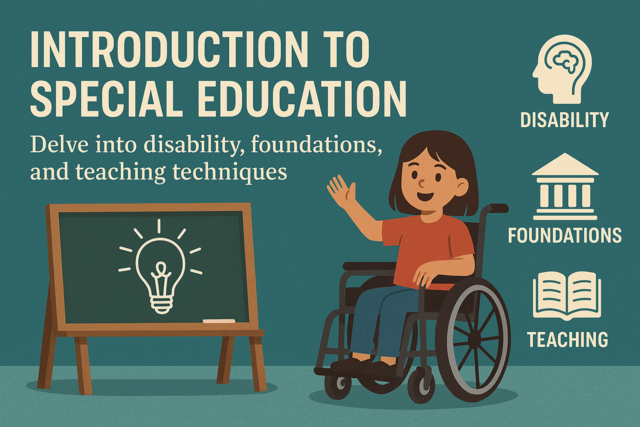Democratic discipline is exactly what it sounds like -- a democratic method of classroom management and discipline that makes the educator the "president," and the students the "citizens," of the classroom. This method calls upon effecting the protection of human rights of the students and the teacher. It utilizes the U.S. Constitution's premise of freedom, justice, and equality and extends these to each student in the class, and to the teacher, as well. It is best to implement this method at the beginning of the school year with the help of the students; however, with a little planning and work, it can be put into practice at any point during the school year if the educator feels this system might help create a better learning environment. This model is very similar to Judicious Discipline, which was developed by Forrest Gathercoal.
In our country, we all have the benefit of constitutional rights. Essentially, our constitution gives each individual the right to freedom, justice, and equality. While sometimes these rights are provided in some classrooms, rarely is a classroom managed as such. Democratic discipline uses the basic foundations of our governmental system and structure to run the classroom. It is a system that many teachers find works very well; students become excited over the idea of being an equal member of a group that makes decisions, rather than a bystander who is at the mercy of educators and parents. In addition to being an effective classroom management method, it also serves as an excellent social studies teaching resource. Students actually get to learn by "living" in a democratic environment that they have little knowledge of, or access to, due to their age.
Democratic Discipline Techniques
Essentially, the educator is instructed to set the stage for the coming year on the first day of class. The educator should let the students know upfront, that he or she is not only there to educate them, but also to protect their human rights as citizens of his or her classroom. If students are not familiar with what their constitutional rights are, the teacher should explain them. If they are familiar with the U.S. Constitution, then the teacher should explain how those rights apply to them in this classroom. The teacher should solicit the help of the students to plan fair rules, consequences, and guidelines. A voting system can be utilized to establish the format. This is the first step in making the students part of the classroom "democracy."
The teacher should present the students with the following, letting all the students know that he or she swears to protect each student's constitutional right to the best of his/her ability:
1. Freedom. You and I have a right to freedom in this classroom.That means you have a right to be yourself, express yourself without fear, and be able to make choices for yourselves.
2. Justice. You and I have the right of justice in this classroom. This means that students and teacher have access to the school rules (judicial system) and consequences that are fair for all. Students who are accused of misbehavior have a right to explain their side of the story; students who have their rights infringed upon have a right see justice administered to the offending party.
3. Equality. You and I have the right to equality in this classroom. Every effort should be made to make sure that all students' individual needs are met. Every student should have an equal right to succeed and all students should be treated with the same fairness, respect, and dignity.
Lastly, for this method to have any impact and sustain over time, every student needs to commit to four serious responsibilities, they are:
- Respect of property: Students must all commit to treating property with respect. School property, other students' property and teachers' property. If the student(s) break or damage property not belonging to them, they have to make equal restitution for the loss.
- Commitment to learning: Students must make every effort to learn the curriculum as created by the teacher. If a student cannot participate in a particular lesson due to religious reasons, (evolution theory, for example), that student may be excused for that lesson, but he or she must provide an equivalent amount of the work to the other students on another subject or topic.
- Health and safety: Students must commit to behave in a way that is healthy and safe for all. This includes physical, emotional, and mental health. For instance, freedom of speech does not allow one student to verbally malign, insult, or bully another student.
- Respecting the right of others: Students must commit to treating their fellow students and the teacher with respect. This includes the right to learn. Being highly disruptive in the classroom is not respecting the other students' right to learn.
At the beginning of the year, teacher and students can have a democratic class meeting to form a list of acceptable guidelines for the four responsibilities. This way everyone's voice is allowed to be heard and all sides can have a say in the forming of the basic responsibilities.
Conclusion
Democratic discipline uses the U.S. governmental structure, rights, and responsibilities to help manage the classroom. It provides for respect, the rights of all, rules, and consequences, but allows the students to give input and takes their opinions into consideration. This method is best implemented at the beginning of the year.
You Decide:
Mr. Jones has been using the democratic discipline method in his classroom with great success. One of the rules all the students voted on was "no bullying;" however, no consequence was set up if bullying occurred in the classroom. Several students have been taunting and intimidating a new student who has a physical disability. When confronted, they insist it is all in good fun, but the victim of their jokes does not seem to be enjoying himself at their expense. According to the democratic discipline method, what should Mr. Jones do?
NOTE:
Judicious Discipline is nearly identical to democratic discipline. It uses the same "bill of rights" and constitutional rights method, and also proposes to have the students set up the "rules," and consequences to breaking rules in the classroom. Judicious discipline was coined by the theorist and writer Forrest Gathercoal.
You Decide Answer:
The Jones Model of classroom management uses body language, incentives, and individual attention to help students become self-motivated and independent in their classwork. The goal of this method is to keep classroom interruption to a minimum. This method also requires less micro-managing from the teacher, which helps students achieve self-control. Jones's classroom observations led him to surmise that nearly 50 percent of teaching time was lost every day due to disruption in the classroom. This led him to a three-fold technique that works in unison to curb classroom interruptions.
OverviewThe key focus of this method is lowering classroom interruptions and increasing on-task, learning time. Frederick Jones came up with a three-point method to achieve this. Teachers must systematically employ the three techniques consistently to achieve results, but once the students understand the principals of how the Jones Model works, it is relatively simple to maintain and understand.
Jones Model Techniques
The three-fold discipline technique that Jones employs involves using these three skills:
1. Persuasive body language: Teachers should use posture, direct eye contact, facial expressions, signals, and physical proximity to persuade students to behave. The point of body language is to avoid taking actions that will slow down or interrupt the lesson; it is a quick, non-verbal, non-threatening method of getting the point across to students.
2. Incentive system: Providing rewards or recognition will motivate students, keep them on task, get them to complete work, and not misbehave. Incentive systems are used by the most effective teachers. Incentive provides motivation from students, something to look forward to if they stay on task. Incentives should be something the entire class can enjoy, not stars and awards that are given only top performers. Doing art work, playing a game, getting a snack break, getting to play outdoors -- these are all activities that all students can look forward to.
3. Individual attention and help: One-on-one help will help teachers find and fix gaps or hurdles that are keeping the student from completing work. Giving individual help often fixes small problems and obstacles that are keeping a student from learning. Often, when a student is having problems with something, they are too embarrassed to ask for help in front of the class. Also, they may be interrupting to create a distraction.
The following is an example of body language put to use as suggested by Jones:
- Mary and Sue are talking and laughing while Mr. Jones is explaining the process used to divide fractions. Mr. Jones makes eye contact with them, pauses momentarily, and then continues with his explanation. Mary and Sue should stop talking when Mr. Jones looks at them and pauses. However, if they continue...
- Mr. Jones should pause again, make eye contact, and shake his head slightly but emphatically. He could give a brief palm-out signal also. Mary and Sue should stop talking when he sends these signals. However, if they continue...
- Mr. Jones should stand, calmly, beside Mary and Sue. He should ask the class, "Who wants to go to the board and show us how to divide three-fourths by one-third and explain, step-by-step, how to solve the problem?" Mary and Sue should certainly stop talking now. However, if they continue...
- Mr. Jones should make eye contact with them and calmly say, "Mary, Sue, I want you to stop talking right now."
If the girls continue to defy the teachers final verbal direction, Mr. Jones should stop the lesson long enough to separate the girls, seat them in opposite sides of the room, or, as a last resort, inform them that they will be put on detention. If the problem gets this far, a conference will have to be scheduled with the girls and perhaps with their parents, as well. If the problem still continues, the vice principal and principal will have to get involved.
For the Jones Method to work best, it should be fully explained to the class what the teacher is trying to accomplish. The teacher should allow the students to vote on "incentive" activities that would motivate them to stay on task. The teacher should always be consistent and, when using body language, start with the least disruptive, taking it to the next level only if absolutely necessary. Remember, the goal of this method is to decrease classroom interruption.
You Decide:
During a class instruction on essay writing, Mrs. Cortes notices two students passing notes and laughing. Several of the students surrounding them are curious about the laughter and start to become distracted. Using the Jones's model, what should Mrs. Cortes do first? What should she do as a last resort?
You Decide Answer:
The first thing Mrs. Cortes should do is pause speaking only long enough for the students to look up, so she can make eye contact with them. The last resort would be for Mrs. Cortes to separate the note-writing student, but only after she has gone through all steps of the "body language" procedure.





















